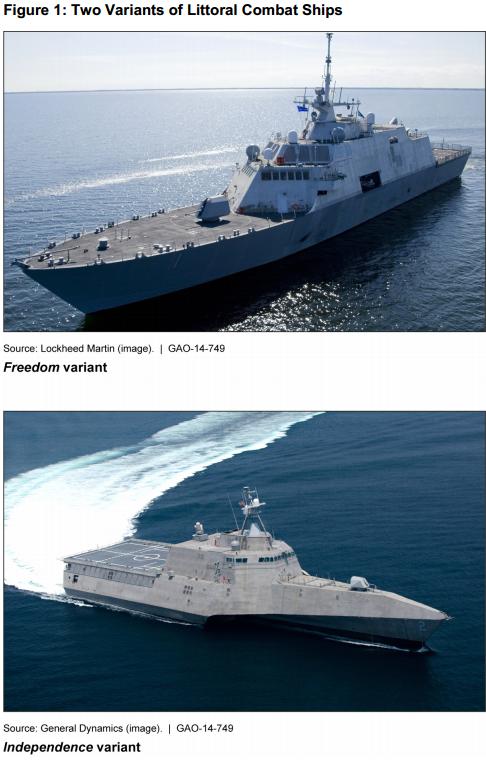The Future of the Navy’s Littoral Combat Ship
- surface warfare;
- mine countermeasures; or
- anti-submarine warfare.

Excerpted from GAO-14-749
Lessons Learned from First Overseas Deployment The Navy deployed the USS Freedom, the first Freedom variant ship, from San Diego to Singapore for 10 months in 2013—the first overseas deployment for any LCS. The Freedom was equipped to conduct the surface warfare mission. We reported on the deployment and the overall costs of the LCS. Here are some of our major findings:- Operations and maintenance: The deployment showed that the Navy could implement some of the concepts needed to operate and maintain LCS ships. However, it has not yet addressed remaining risks in areas such as managing crew workload, training sailors, maintaining ships effectively, and finalizing needed logistics support.
- Mechanical problems: The USS Freedom spent more time in port than at sea due to mechanical problems, resulting in high workloads for the relatively small crew.
- Annual per-ship costs: Navy data indicate that the annual per ship costs for LCS are nearing or may exceed those of other surface ships, including those with greater size and larger crews, such as frigates and destroyers.
- Gaps in operational knowledge: Significant gaps remain in the Navy’s knowledge of how LCS will operate and what capabilities it will provide—issues we initially raised in our July 2013 report.
- Capability limitations: Initial LCS seaframes face capability limitations resulting from weight growth during construction. Navy and shipbuilder processes for managing ship weight have slowed the resolution of the problem.
- Acquisition strategy risks: The Navy’s strategy of buying ships while key concepts and performance are still being tested increases the risks of costly retrofits and reduced capability.
- Questions on the content of this post? Contact Michele Mackin at mackinm@gao.gov or John Pendleton at pendletonj@gao.gov.
- Comments on GAO’s WatchBlog? Contact blog@gao.gov.

GAO's mission is to provide Congress with fact-based, nonpartisan information that can help improve federal government performance and ensure accountability for the benefit of the American people. GAO launched its WatchBlog in January, 2014, as part of its continuing effort to reach its audiences—Congress and the American people—where they are currently looking for information.
The blog format allows GAO to provide a little more context about its work than it can offer on its other social media platforms. Posts will tie GAO work to current events and the news; show how GAO’s work is affecting agencies or legislation; highlight reports, testimonies, and issue areas where GAO does work; and provide information about GAO itself, among other things.
Please send any feedback on GAO's WatchBlog to blog@gao.gov.
